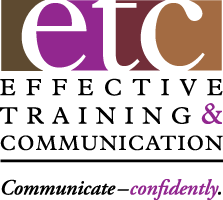A workplace meeting can be an effective and efficient tool for dealing with information problems or communication issues. It can also be a frustrating, unproductive and expensive waste of time. How organizations plan, facilitate and manage the meeting process will make all the difference between success and failure. Here’s a summary of some key points I shared with a client during a recent workshop on Meeting Management Best Practices.
Meeting Invitation/Agenda
All meeting facilitators should send out an email or ‘Outlook’-type scheduling invitation with an agenda at least two workdays in advance to all participants and other staff and managers on a need to know basis, including:
1. Facilitator’s name, phone & email contact info.
2. Purpose of meeting and intended outcomes.
3. Location, date, start and end times.
4. Specific agenda indicating topics in order of importance with approximate time allocated for each and person responsible, where appropriate.
5. Complete list of attendee names, phone & email contact info.
6. Specific assignments for attendees, including person to take notes.
7. Attachments of any needed material for pre-meeting preparation with clear indications of any required attendee responses to specific questions or needed input with due date and appropriate person to receive this information.
8. Complete ‘cc’ list for those managers or other key staff not otherwise invited but who have an interest in the content and outcomes.
9. Any specific AV needs – projector, laptop connectors, white board/flip charts, etc.
Do keep in mind that a meeting is certainly not the only tool organizations have to deal with communication needs and it isn’t the best tool for every type of situation. And, by their very nature, workplace meetings consume large amounts of participant time in the process. The only thing really worse than a bad meeting is a good meeting that didn’t need to be a meeting at all. The problem could have been more easily solved with a simple series of brief phone calls or an email.
I’ll share best practices from this engagement in future issues as well as responses to questions you send in. So, make the effort to get your organization to start meeting like this. If they already do … good for you!
